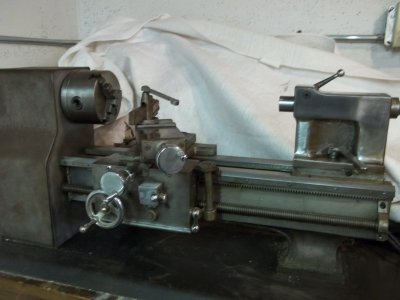That sounds very high for precision tapered rollers (unless you are specifying a huge spindle bore). For something around 12" swing size, and a 3/4 hole through spindle, I would expect closer to $150 per bearing. You should be able to get a matched set of ABEC-7 angular contact bearings for under $300 (name brand).
Keep in mind total cost, if you go with bronze bushings, you are going to want to harden the shaft, which means grinding afterwards. Unless you have the facilities to do this yourself, that is going to add to the total cost of the spindle assembly, and likely put you back to where you would be with AC or tapered rollers.
Keep in mind total cost, if you go with bronze bushings, you are going to want to harden the shaft, which means grinding afterwards. Unless you have the facilities to do this yourself, that is going to add to the total cost of the spindle assembly, and likely put you back to where you would be with AC or tapered rollers.

